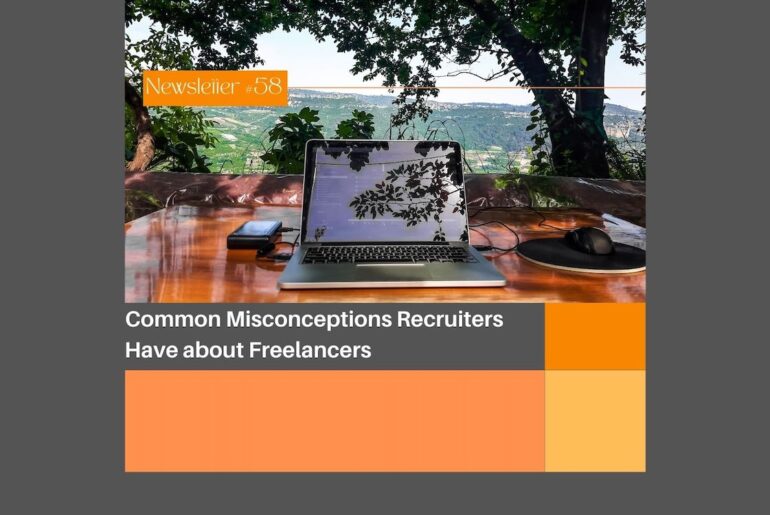Career Coach, Professional Resume Writer, Freelance Writer
Google, Apple and IBM are just some of the companies whose hiring practices no longer prioritize or require a university degree in their job descriptions. Instead, they’ve begun emphasizing employability skills, and moved towards skills based hiring for some of their roles as a better indicator of what would make a good employee. Likewise, in light of more recent events of racial injustice, harassement and gender inequality, many businesses are taking a second look at their recruitment strategy to build more inclusive workplaces.
Diversity in the workplace is not just nice to have, but a proven ingredient for driving innovation and improving financial performance. In fact:
- Inclusive corporate cultures are twice as likely to meet or exceed financial targets;
- Diversity of thinking can increase innovation by 20% and reduce risk by 30%;
- The most ethnically diverse companies outperformed the least diverse by 36% in profitability;
- Companies with the most ethnically/culturally diverse boards are 43% more likely to experience higher profits;
Yet, outdated hiring practices and unconscious biases in the workplace are still preventing even the most committed businesses from hiring the best talent and building an inclusive work environment. The U.S. labor market, for instance, is currently facing one of the biggest gaps in supply and demand for job vacancies as people are re-assessing their priorities and career aspirations.
This presents a great opportunity for businesses to rethink their hiring practices and update their overall HR strategy in a way that would attract more talent and create a more diverse workforce.
Here we look at some of the practical steps businesses can take to make their recruitment strategy more inclusive and, as a result, attract a diverse and highly-skilled talent that can drive innovation and improve business performance.
Make Your Job Descriptions More Inclusive
The language you use in your job ads is oftentimes the first impression potential employees get of your business. It’s also the main filter that decides who goes forward with the application and who clicks away.
A study by the University of Nottingham has found that less than 5% of all the language used in recruitment actually addresses issues of equality, diversity and inclusivity (EDI). Most job adverts refer to inclusivity as a token mentioned at the end of the ad as an “equal-opportunity employer”, but fail to demonstrate their inclusivity throughout the job descriptions.
The same study found that many job descriptions use masculine language like “hunter”, “smashing targets”, and “tenacity” which can be off-putting to certain demographics. Other examples are the use of vague or hyperbolic language like “extensive experience”, “word-class”, “exceptionally driven” etc., which can further discourage people from applying.
Aside from the language used, many job ads still rely on degree based hiring or require a specific number of years of experience, even though there’s no proof that either is essential for the job in question. This can exclude a broad range of applicants who could otherwise be a great fit for the job.
When writing your job advert, think about what’s really needed for the job. Would five years of experience really make a huge difference in how an employee performs? Or would focusing on other transferable or employability skills, like specific numeracy or digital skills, be a more accurate reflection of what type of applicants you’re looking for?
Finally, could you replace statements like “superior ability to satisfy customer requirements” with “sensitive to customer needs” to appeal to a wider demographic. Small tweaks like these can make a massive difference in how you’re perceived as an employer and how successful you’re in hiring a diverse workforce.
Re-evaluate How You Rate Resumes

Now that an applicant has been convinced to apply for a job, how do you assess their application? A study by Harvard Business Review has found that, despite employers’ best intentions to be more inclusive, they still hold many biases when it comes to how they view and rank resumes.
For instance, the study has found that, when faced with the exact same resume, employers still prefer white over minority-sounding applicant names. Also, many showed preference for prestigious universities or internships, as opposed to summer jobs like baristas and waiters.
This in itself can severely hinder diversity in the workplace from ethnic and socio-economic perspective, as many people coming from a less privileged background would have needed to take a summer job over an unpaid, prestigious internship.
It’s really important at this stage that you take pro-active approach in addressing inherent biases within your leadership and HR team. Outside of increasing the focus on employability skills, one way to do this is to raise awareness through training and ongoing discussion around what it means to have inclusivity in the workplace. Another way is to ensure that applications are considered by a wider and more diverse group of assessors who can counter-balance any inherent biases within the group.
Review the Employee Perks You Offer
Employee perks might not be on top of the agenda for driving diversity, but they can have a big impact on how potential employees respond to your job offer. A Harris Poll study has found the benefits an employer offers are just as important to candidates as the salary that comes with the job.
In this context, traditional perks like fruit or drinks in the office are no longer relevant in the context of remote and hybrid work. The strain on mental health as well as the change in people’s daily work routines means that almost two thirds (58%) of employees today put a bigger emphasis on perks related to physical and mental wellbeing, like online therapy, wellbeing allowances, mindfullness and fitness apps.
In the context of diversity, it’s also important to embrace remote and flexible working opportunities. Not only are these expected by employees today, but bringing back the old 9-5 office workstyle can exclude a large proportion of the workforce that might have childcare or other responsibilities throughout the day.
Build a Culture of Inclusivitiy
You might have worked with an external recruitment specialist or have an internal HR expert who helped you create standout, inclusive job descriptions. However, the person you’ve hired now needs to work and thrive within the corporate culture you’ve created. Having an inclusive recruitment approach and exclusionary practices within the business can only lead to frustrated employees and higher employee turnover rate over time.
Building a culture of inclusivity is important and goes beyond offering training on unconscious bias or hiring people from different ethnicities and minority groups. In fact, a meta-analysis of over 490 studies has found that training alone wouldn’t change biased behavior.
Instead, companies that take a more systemic approach to addressing biases have the biggest chances of succeeding. Things like removing self-assessment from performance reviews, standardizing hiring practices, focusing on employability skills, and encouraging employees to call out stereotyped views when they witness them can all contribute towards a more inclusive working environment. Likewise, encouraging employees to reflect on counterstereotypical examples and to interact with different groups of people can go a long way in making them more aware of their own personal biases.
Achieving Diversity is a Commitment
Even though diversity is on top of the HR agenda, achieving true diversity can elude even the most committed of companies. Nevertheless, in the current landscape where businesses are still feeling the strain from the pandemic, building a diverse workforce can be essential for overcoming existing challenges. An intentional approach towards diversity where business leaders re-consider their hiring practices, address personal biases and encourage systemic inclusivity can go a long way in inviting a bigger and more diverse group of applicants to come through the door.








